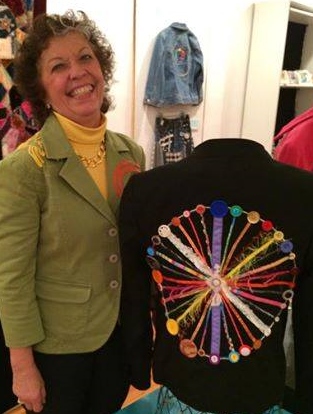Bridging the Gap: Five Fun Steps
OR What to do When You’re Caught Between the ‘No Longer’ ….. and the ‘Not Yet’
Do you have goals that are big enough to be daunting? Does the gap between where you are and where you want to go sometimes seem too  big to cross? Are you betwixt and between- caught between the no-longer and the not-yet? If any of this rings a bell for you, then I’ve got some good things to share with you.
big to cross? Are you betwixt and between- caught between the no-longer and the not-yet? If any of this rings a bell for you, then I’ve got some good things to share with you.
According to research done at the University of Scranton in January of 2014 and published in the Journal of Clinical Psychology, 45% of Americans usually make New Year’s Resolutions and only 8% keep them. If you do the math here, this means that only 20% of the goals that were set actually get completed. No wonder so few people set goals or make resolutions! On the other hand, this same study showed that writing your goals increases the chance of completing them ten times over not writing them.
If you’re highly sensitive or gifted, (that is, you’re a CASIGY™), goal setting can be even more challenging for you than for others. If you’re not familiar with this term, a CASIGY™ is an acronym that describes a combination of characteristics that often show up together. A CASIGY™ is a “Creative, Acutely Aware, Super-Sensitive, Intense, and/or Gifted You.” Having any one of these characteristics can complicate your life, and if you happen to have all of them, well, that’s when things can get VERY complex and challenging. How many of these characteristics do you relate to?
A CASIGY’s™ goals may be a little (or a lot) different than most other people’s. You may also be reluctant to set goals because of difficulties you have had in the past in reaching your goals. In my counseling work through the years with CASIGYs™, I’ve found that you often need to use creative, sensitive, intelligent ways of approaching goal setting and accomplishment for you to have the outcome you desire. In “Five Fun Steps,” I’m going to describe a creative, sensitive, intelligent approach that help you overcome the barriers and obstacles in your path so that you can reach your goals, in both business and in life.
 Does a deep dark (metaphorical) canyon sometimes appear in your path just when you set the goal to climb a (metaphorical) mountain? You’re not alone. We set goals and make resolutions with grand things in mind. But there are gaps between us and getting there─gaps in knowledge, skill, resources of time, money or who knows what else that we don’t even know exist until we start moving toward our goals. This is a universal, archetypal experience for those who set goals. But for a CASIGY, who is accustomed to knowing things or being aware of many things that others don’t notice, it can seem disastrous to not know how to get from ‘here’ to ‘there’. It seems like such a simple thing. How can it be so difficult?
Does a deep dark (metaphorical) canyon sometimes appear in your path just when you set the goal to climb a (metaphorical) mountain? You’re not alone. We set goals and make resolutions with grand things in mind. But there are gaps between us and getting there─gaps in knowledge, skill, resources of time, money or who knows what else that we don’t even know exist until we start moving toward our goals. This is a universal, archetypal experience for those who set goals. But for a CASIGY, who is accustomed to knowing things or being aware of many things that others don’t notice, it can seem disastrous to not know how to get from ‘here’ to ‘there’. It seems like such a simple thing. How can it be so difficult?
Life has a way of doing this- dangling a carrot in front of our noses or enticing us with visions of great accomplishments, great things we can do for mankind, and then waiting until we have passed the Point of No Return to reveal this deep dark canyon smack dab in front of us. It is easy to interpret this a meanness, abuse, unfairness, etc. I’d like to propose that this Dire Circumstance is instead, an Invitation to a Quest; a pilgrimage of adventure and discovery. Necessity likes to send each of us through the Deep Dark Woods of despair where we encounter dragons, ghouls, witches and other awful metaphorical creatures.
Yes, We Must ALL Enter The Deep Dark Woods and Face The Dragon(s) to Find The Buried Treasure
BUT Frontal Assault won’t work against a dragon. This calls for creativity & innovation; being fully present in the moment, grounded, centered & focused; engaging and aligning body, mind, soul and spirit; your Conscious and Unconscious to connect and cooperate; and lastly, A Secret Weapon. With these tools, you will have joined the ranks of a long line of dragon slayers!
BUT – What does fairy tale and fantasy have to do with real life in the modern world?
 You may say ,“What does facing dragons have to do with the practical concerns of paying bills, finding and nurturing customers or clients, and feeding a family? This is silliness! I need to muster up BIG ENERGY to reach my BIG GOALS. I face big barriers to my progress toward my goals. What does going into the forest and fighting dragons have to do with overcoming obstacles? Time’s a-wasting’! Let’s get on with it!
You may say ,“What does facing dragons have to do with the practical concerns of paying bills, finding and nurturing customers or clients, and feeding a family? This is silliness! I need to muster up BIG ENERGY to reach my BIG GOALS. I face big barriers to my progress toward my goals. What does going into the forest and fighting dragons have to do with overcoming obstacles? Time’s a-wasting’! Let’s get on with it!
We’ll do just that. But first, let me ask you, Would you like to be inspired and even instructed by someone who has fought and won many battles with dragons, ghouls, witches and monsters in order to break significant new ground in ways that have impacted us all? Yes? Let me introduce physicist Albert Einstein.
What does how this eminent scientist worked have to do with how ordinary folks like you and I can reach our goals?
Let me explain. When Albert Einstein developed his new understanding how the universe operates, he worked in a unique way that helped 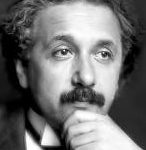 him find and enter this completely new territory, according to Jacques Hadamard in his book, “The Psychology of Invention in the Mathematical Field”. Do you suppose that using Einstein’s methods might help you in your quest for the new ground in your life? Do you suppose that when you face problems you don’t know how to solve, if you followed his method, you might change your understanding of your universe? With this new understanding, do you suppose you could do new things and go places you haven’t been before?
him find and enter this completely new territory, according to Jacques Hadamard in his book, “The Psychology of Invention in the Mathematical Field”. Do you suppose that using Einstein’s methods might help you in your quest for the new ground in your life? Do you suppose that when you face problems you don’t know how to solve, if you followed his method, you might change your understanding of your universe? With this new understanding, do you suppose you could do new things and go places you haven’t been before?
Einstein was not only a scientist and inventor, we might also call him a philosopher. His philosophy on problem solving was that “The significant problems we have cannot be solved at the same level of thinking with which we developed them. We must learn to see the world anew”. That’s a nice idea, but . . . . . HOW do we do it?
To see the world as if we have never seen it before, do what Albert did: Play Around!
To see th e Universe anew, Einstein used what he called Combinatory Play. He believed that “Combinatory Play seems to be the essential feature in productive thought”. Combinatory Play consisted of literally playing around! He used his imagination and his hands drawing out what he saw in his mind’s eye to visually combine his ideas into new possibilities. He would play around with these visual images, synthesizing materials, information and perceptions. Only later, after he had developed and refined his ideas, would he then find words to crystalize his ideas. So first and foremost, he played, and that is where his unique, even revolutionary ideas came from. Do you need unique ideas? Do you need new and different ways of viewing your world? Read on . . . .
e Universe anew, Einstein used what he called Combinatory Play. He believed that “Combinatory Play seems to be the essential feature in productive thought”. Combinatory Play consisted of literally playing around! He used his imagination and his hands drawing out what he saw in his mind’s eye to visually combine his ideas into new possibilities. He would play around with these visual images, synthesizing materials, information and perceptions. Only later, after he had developed and refined his ideas, would he then find words to crystalize his ideas. So first and foremost, he played, and that is where his unique, even revolutionary ideas came from. Do you need unique ideas? Do you need new and different ways of viewing your world? Read on . . . .
“We need new images if we are to change; images of other possibilities,”
according to teacher of the creative process and artist Pat Allen. But how can you find new images? There are many ways. One way is through your dreams and the images they bring to you. If you don’t currently remember your dreams, another that may be more accessible to you is to look around you as you walk and drive through your day. What images catch your eye and capture your attention? Pay attention, and you will have plenty of images.
Why do we need new images to take us to new places?
 You may choose to focus on your goal or a dilemma or obstacle that is blocking your progress toward your goal. You may connect with the void that exists that you don’t know how to cross or fill or what you need to take you across that gap or some other aspect of your situation. There is no right or wrong choice here. Even this selection can be an important part of your process and your movement toward your goal. You may also do this often, each time taking a different approach and exploring a new aspect of your situation.
You may choose to focus on your goal or a dilemma or obstacle that is blocking your progress toward your goal. You may connect with the void that exists that you don’t know how to cross or fill or what you need to take you across that gap or some other aspect of your situation. There is no right or wrong choice here. Even this selection can be an important part of your process and your movement toward your goal. You may also do this often, each time taking a different approach and exploring a new aspect of your situation.
Taking these inner images and ‘downloading’ them as it were, from your imagination into the three dimensional world of time and space can parallel the process of bringing your dreams and goals into reality. When you use a playful process that has no concrete, direct bearing on your “BIG CHALLENGE” in life, yet has a metaphorical or symbolic connection to it, your creative imagination is freed to discover and reveal things that are often not accessible when there are big things at stake. These discoveries often have a synchronistic effect and can help you with your external and especially our internal challenges.
The way in which you approach this new but non- or low-risk task is likely similar to how you approach your “BIG 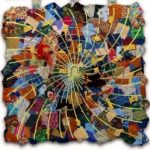 GOAL”. It stands to reason that by paying attention to how you approach this “silly, stupid craft project” and how you deal with the challenges that it brings you, you can allow yourself to become aware of ways that you also approach the really big things in your life. You can see our strengths, and you can also observe what gets in your way, what distracts you, where you get off track, etc. You can also experiment in ways to intervene effectively with yourself to transcend the problems and reach your goal. The trial and error process here has very low risk with extremely high yield, so that the lessons learned and the progress made can be transferred to other areas in your life that have higher risk.
GOAL”. It stands to reason that by paying attention to how you approach this “silly, stupid craft project” and how you deal with the challenges that it brings you, you can allow yourself to become aware of ways that you also approach the really big things in your life. You can see our strengths, and you can also observe what gets in your way, what distracts you, where you get off track, etc. You can also experiment in ways to intervene effectively with yourself to transcend the problems and reach your goal. The trial and error process here has very low risk with extremely high yield, so that the lessons learned and the progress made can be transferred to other areas in your life that have higher risk.
As we make something concrete and tangible that illustrates some inner or outer aspect of our current situation, each step in the process calls for another step and in this way, the creative project develops in a playful manner. Ideas and insights about the project as well as the inner and outer dilemmas in your life follow from the creative process with the object itself, and also from the symbolism that develops from it. The act of doing the creative project leads us into a new place and also into a new way of thinking. This enables us to find new images and also to “see the world anew”.
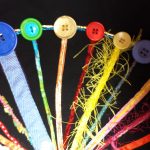 Creative and Contemplative Handwork™ is also akin to what Carl Jung called Active Imagination. As we allow ourselves to play with visual images and especially as we use our hands and craft materials to make them three dimensional, we experience the phenomenon that our hands ‘know’ what our frontal lobes have no way of knowing. So often we are like Winnie the Pooh as he sits on a log and tries to ‘think, think, think.’ This just builds frustration and gets us nowhere. There is a different kind of knowing that we tap into when we leave our cognition behind and free ourselves to contact our intuition, and also our Unconscious as well as what Jung called the Collective Unconscious. It is as we learn how to create without editing our thoughts and actions to conform to our ideas about what is acceptable in the world that we begin to truly create. And that is when we begin to go where we have not been before, first internally in the psychic realm, and later externally.
Creative and Contemplative Handwork™ is also akin to what Carl Jung called Active Imagination. As we allow ourselves to play with visual images and especially as we use our hands and craft materials to make them three dimensional, we experience the phenomenon that our hands ‘know’ what our frontal lobes have no way of knowing. So often we are like Winnie the Pooh as he sits on a log and tries to ‘think, think, think.’ This just builds frustration and gets us nowhere. There is a different kind of knowing that we tap into when we leave our cognition behind and free ourselves to contact our intuition, and also our Unconscious as well as what Jung called the Collective Unconscious. It is as we learn how to create without editing our thoughts and actions to conform to our ideas about what is acceptable in the world that we begin to truly create. And that is when we begin to go where we have not been before, first internally in the psychic realm, and later externally.
Did I mention that doing Creative and Contemplative Handwork™ is fun? I like to call it Play Therapy for Grown-ups™. No, it doesn’t have to be done as a part of a “therapy process” (but it can be and in my counseling practice, often is) but it is therapeutic nevertheless. When I include a small snippet of Creative and Contemplative Handwork™ in my presentations or PlayShops, people always remark that they are surprised by how much fun it is, how powerful it is, how deep within them it reaches, and how glad they are that this was included in their event. My counseling clients often make similar remarks, especially the first few times they experience it. Later on, they are not surprised as often by it, but they continue to describe it as fun, helpful in deep and powerful ways that often elude words, and compelling in the depth of its reach into their lives and their psyches.
“I have progressively learned to trust the process. Energy is required to reach this state. C. G. Jung calls the energy required to bring about this union of the conscious and unconscious the Transcendent Function. He likens this transformation to the process similar in Alchemy. If the elements (conscious/unconscious) combine in correct proportions, with the proper degree of heat (energy) given the necessary length of time and permitted [to do so] the unconscious will guide the process. This …requires the ability to ‘let it be’ and to recognize the happening when it occurs.”[1]
All of this is well and good, you say, but HOW can you do this process? I have discovered five steps of things that you can do to participate in Creative and Contemplative Handwork™ whether you are attending one of my PlayShops or Creative Transformations™ small groups, or whether you are doing this on your own.
- First is to CONNECT deeply with yourself. We are often so focused externally in our extroverted world that it may take relaxed
 concentration to shift gears and connect with ourselves in a deep, meaningful way. This shift can be facilitated by paying attention to your breathing, your body sensations, your emotions and the like. It can be deepened by tuning in to the images already present in your imagination and the thoughts floating (or spinning, as the case may be) through your head.
concentration to shift gears and connect with ourselves in a deep, meaningful way. This shift can be facilitated by paying attention to your breathing, your body sensations, your emotions and the like. It can be deepened by tuning in to the images already present in your imagination and the thoughts floating (or spinning, as the case may be) through your head.  Second is to CHOOSE one or a few images that carry more energy or impact than do the rest. The ones that carry more energy for you or have a greater impact on you show you that they are more significant or meaningful to you at this time in your life. Actually a better description of the process is that the images choose you rather than you choosing them. It is as you pay attention and tune in deeply that you will be able to perceive the ones that carry this heightened energy or have a greater impact on you right now.
Second is to CHOOSE one or a few images that carry more energy or impact than do the rest. The ones that carry more energy for you or have a greater impact on you show you that they are more significant or meaningful to you at this time in your life. Actually a better description of the process is that the images choose you rather than you choosing them. It is as you pay attention and tune in deeply that you will be able to perceive the ones that carry this heightened energy or have a greater impact on you right now.- Third is to physically CREATE one or more of these images in some way. As described above, the
 process of pulling the image out of the imagination and into three dimensional time and space is challenging and empowering at the same time. This is a body-mind-soul-spirit adventure. As your hands work with whatever materials you are using, these often disconnected aspects of ourselves can learn how to negotiate with one another, and eventually begin to work together in unity rather than pulling against each other. Each step in the creative process may lead to another in a natural, intuitive way or can reveal additional dilemmas or problems to be solved, echoing life’s natural rhythms. The challenges of facing these issues can strengthen us internally and show us the way to dealing effectively with our everyday life problems.
process of pulling the image out of the imagination and into three dimensional time and space is challenging and empowering at the same time. This is a body-mind-soul-spirit adventure. As your hands work with whatever materials you are using, these often disconnected aspects of ourselves can learn how to negotiate with one another, and eventually begin to work together in unity rather than pulling against each other. Each step in the creative process may lead to another in a natural, intuitive way or can reveal additional dilemmas or problems to be solved, echoing life’s natural rhythms. The challenges of facing these issues can strengthen us internally and show us the way to dealing effectively with our everyday life problems. 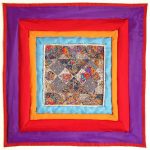 Contemplation is crucial to this process and can happen along the way, while you create. It is also important to take time apart to contemplate our creation and develop a dialog with it in your imagination. Many artists, crafters and quilters speak of their creation “speaking to them” in their imaginations. It’s important to develop this aspect of the creative process, both the listening and the deep, inner responding. This can be the most powerful part of the process, and the time when the “seed of benefit that’s hidden inside each and every adversity” referred to by Napoleon Hill[2] sprouts and begins to grow.
Contemplation is crucial to this process and can happen along the way, while you create. It is also important to take time apart to contemplate our creation and develop a dialog with it in your imagination. Many artists, crafters and quilters speak of their creation “speaking to them” in their imaginations. It’s important to develop this aspect of the creative process, both the listening and the deep, inner responding. This can be the most powerful part of the process, and the time when the “seed of benefit that’s hidden inside each and every adversity” referred to by Napoleon Hill[2] sprouts and begins to grow.- The fifth and final step in the process is to CRYSTALLIZE the growth, healing, or other gains
 made. To follow the metaphor just begun, once the seed sprouts, the work is not finished; the tender sprout needs to be tended, watered, fertilized and cared for carefully throughout its life cycle. Similarly, the tender sprouts of our new growth need to be nurtured until they are ready for harvest or until they produce new seed of their own. One practical example of this can be when Albert Einstein finally took his synthesized ideas and found words for them, first to crystallize them for himself, and later, to communicate them to others.[3]
made. To follow the metaphor just begun, once the seed sprouts, the work is not finished; the tender sprout needs to be tended, watered, fertilized and cared for carefully throughout its life cycle. Similarly, the tender sprouts of our new growth need to be nurtured until they are ready for harvest or until they produce new seed of their own. One practical example of this can be when Albert Einstein finally took his synthesized ideas and found words for them, first to crystallize them for himself, and later, to communicate them to others.[3]
Recommended Reading:
Allen, Pat: Art is a Way of Knowing
Hadamard, Jacques: The Psychology of Invention in the Mathematical Field
Hillman, James: Pan and the Nightmare: Two Essays
Isaacson, William: Twenty Things You Need to Know About Einstein (Article in Time Magazine) Thursday, Apr. 05, 2007
Johnson, Robert A: Living Your Unlived Life
Jung, Carl: Two Essays on Analytical Psychology
Pinkola-Estes, Clarissa: Women Who Run With the Wolves
Poncé, Charles: Working The Soul
Reed, Jean Pruyn: Emergence
Notes:
[1] Reed, Jean Pruyn: Emergence p.40, 41
[2] Hill, Napoleon: Think and Grow Rich
[3] Hadamard, Jacqques, The Psychology of Invention in the mathematical Field

